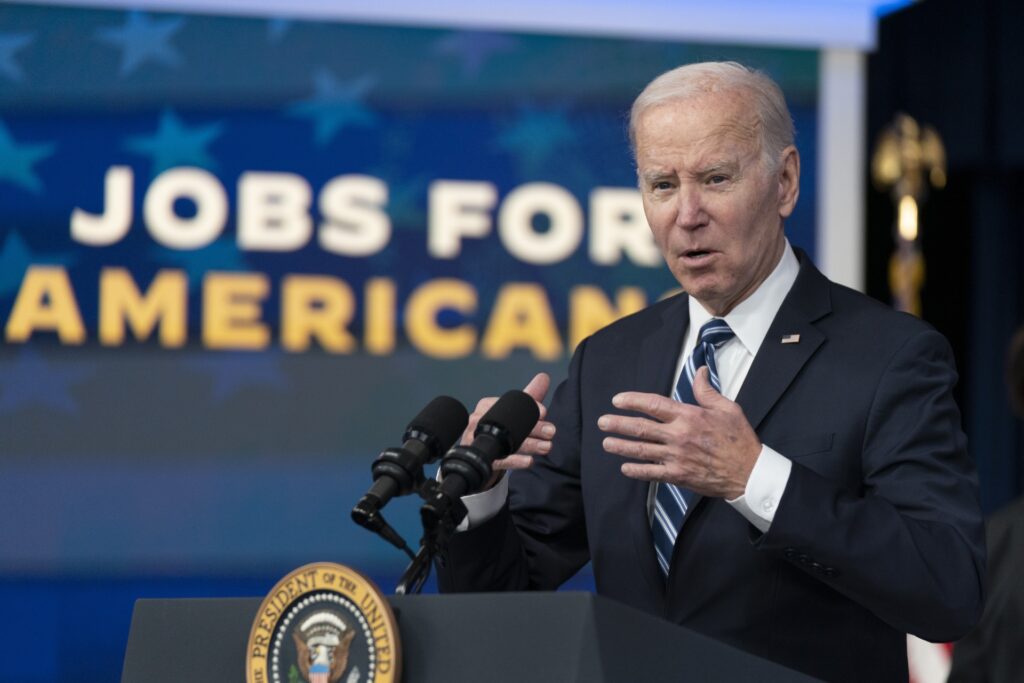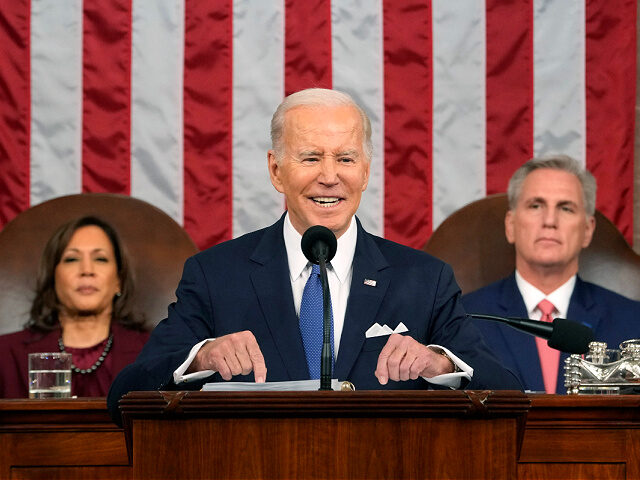CLAIM: President Joe Biden claimed in his State of the Union Speech: “My economic plan is about investing in places and people that have been forgotten.”
VERDICT: Mostly False.
His written speech declared:
My economic plan is about investing in places and people that have been forgotten. Amid the economic upheaval of the past four decades too many people have been left behind or treated like they’re invisible. Maybe that’s you watching at home. You remember the jobs that went away. And you wonder whether a path even exists anymore for you and your children to get ahead without moving away. I get it. That’s why we’re building an economy where no one is left behind. Jobs are coming back, pride is coming back because of the choices we made in the last two years. This is a blue-collar blueprint to rebuild America and make a real difference in your lives. [Emphasis added.]
The mostly false conclusion recognizes that some of the money is helping sidelined Americans. For example, Biden used his speech to tout a law to help build computer chip factories in Ohio and other states.
Biden is spending many billions of dollars on other projects, including construction projects.

President Joe Biden speaks on the January jobs report in the Eisenhower Executive Office Building on the White House complex, Friday, Feb. 3, 2023, in Washington. (AP Photo/Manuel Balce Ceneta, File)
But much money and many jobs are being knowingly diverted from sidelined Americans by Biden’s massive inflow of migrant workers:
Last week, the Bureau of Labor Statistics (BLS) showed a massive spike in the supply of migrant male workers. Routine annual “adjustments increased the estimated size of … the civilian labor force by 871,000, employment by 810,000, and unemployment by 60,000,” the bureau reported on February 3. The report also noted that just 1.6 percent of the new workers are women, and at least 33 percent are Latino, reflecting the administration’s policy of welcoming myriad young job-seeking male migrants.
The BLS report noted that the few sidelined Americans gained jobs during the month:
The number of persons not in the labor force who currently want a job was 5.3 million in January, little changed from the prior month. These individuals were not counted as unemployed because they were not actively looking for work during the 4 weeks preceding the survey or were unavailable to take a job.
Americans’ wages fell — after inflation — amid the massive wave of government spending: “In January, average hourly earnings for all employees on private nonfarm payrolls rose by 10 cents, or 0.3 percent, to $33.03. Over the past 12 months, average hourly earnings have increased by 4.4 percent.”

Immigrants walk along the U.S.-Mexico border barrier on their way to await processing by the U.S. Border Patrol after crossing from Mexico on December 30, 2022, in Yuma, Arizona. (Photo by Qian Weizhong/VCG via Getty Images)
Since early 2021, Biden and his pro-migration deputies have pulled at least three million migrants into the U.S. labor market, alongside a similar flood of legal immigrants and temporary workers.
This massive inflow of migrants skews job-creating investment and decent wages from Americans in the often-ignored heartland states.
The New York Times inadvertently described some of the geographic skew.
“The fact that we were able to onboard a high number of refugees has greatly helped our overall staffing position, and our existing employee morale, because they’re not working so many hours of overtime,” Matthew Bray, a hiring manager at Amcor PLC in Wisconsin told the newspaper.
The Australian-owned firm hired 75 Afghan and Congolese refugees for jobs near Oshkosh, Wisconsin, even though only two in three adult residents of Wisconsin are in the workforce.
The workforce participation rate in the state has declined from a peak of 74 percent in 1997 to just 65 percent in late 2022.
The inflow of migrants also reduces pressure on companies to invest in labor-saving, wage-boosting technology. For example, Wisconsin companies also have the ability to buy or rent industrial robots that would allow American workers to do more work and earn more wages each day.
Most migrants also cluster along the coast in jobs that coastal investors create far from the heartland because they are eager to use the busloads of cheap and compliant migrants instead of proud and outspoken Americans.
For example, a 2021 study of 1,021 picked DACA migrants showed that half lived in California, Texas, or New York. One-sixth held professional licenses, and half earned less than $47,000 a year. A more comprehensive 2017 study showed that a small minority worked in white-collar jobs, and most in sectors dominated by lower-income, blue-collar jobs.

COMMENTS
Please let us know if you're having issues with commenting.